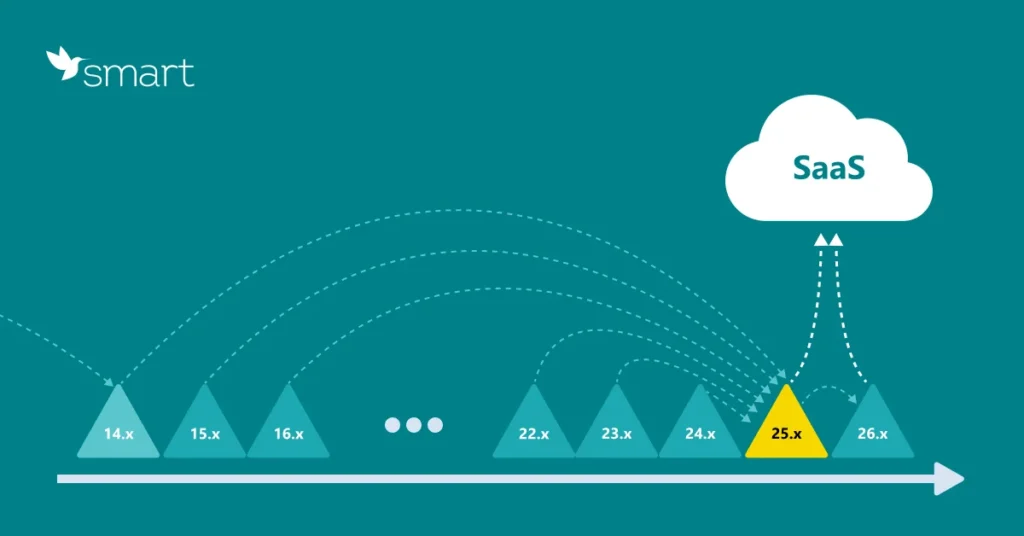Microsoft has announced that the recently released version of Business Central BC25 will be the last one to which you can directly upgrade from versions BC14-24.
Starting with version 26, scheduled for release in March-April next year, an additional step will have to be taken when upgrading from versions prior to BC25.
More about the new Business Central version upgrade process in the context of “what it was – what it will be”
Microsoft Dynamics 365 Business Central (BC) is a popular solution for small and medium businesses, which is constantly updated to improve functionality and security, and compliance with regulations.
Users have the option to upgrade their Dynamics NAV or Business Central to any existing release using the following scheme:
- BC14 – BC24 -> BC-latest
- Dynamics NAV (pre-BC14) -> BC14 -> BC-latest
However, the vendor reports that after the release of the latest Business Central version (BC26) in the spring of 2025, an additional step will be required to upgrade from the “older” versions (BC14-BC24). The upgrade will occur according to the following scheme:
- BC14 – BC24 -> BC25 -> BC-latest
- Dynamics NAV (pre-BC14) -> BC14 -> BC25 -> BC-latest
The reason for this step is that Microsoft plans to physically remove obsolete fields in version 26 to reduce the size of the database, which will lead to incompatibility of the data schema with previous versions.
What this means in practice for users of Microsoft Dynamics 365 Business Central versions prior to BC25
An additional step in the context of upgrading versions of Microsoft Dynamics 365 Business Central always means additional resources and time that this upgrade takes.
With a one-step upgrade, the process is faster, simpler and usually cheaper. An additional step always means an additional project scope, which means more time, human resources and money.
It is also worth noting that for the upgrade to be stable, Microsoft introduces strict requirements for versions. The lack of a direct upgrade from BC14-BC24 to BC26 may complicate support and compatibility for previous versions, since additional migration steps will have to be applied. This is especially relevant for companies integrating BC with other Microsoft business applications or third-party systems.
However, users have the option to upgrade their current version of Microsoft Dynamics 365 Business Central to BC25 before the release of BC26. This will allow them to upgrade to newer versions in the future using the usual one-step principle.
Why should this be done? At least because avoiding unnecessary steps in updating saves time and resources, reduces risks and provides more predictable support.
The process of subsequent updates will be faster, less expensive and, most importantly, the risk of errors is significantly reduced, and therefore the load on IT teams is reduced.
This is especially important for those companies that have invested significant resources in customizing BC for their special needs.


